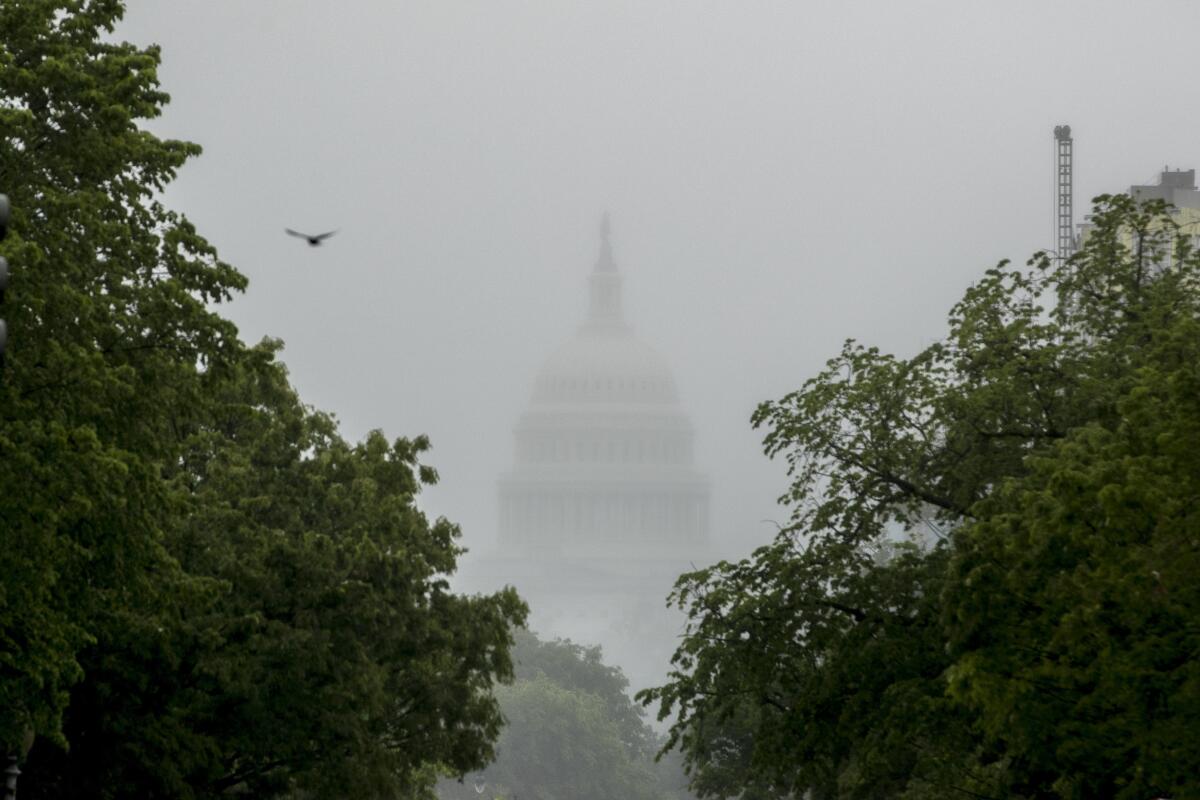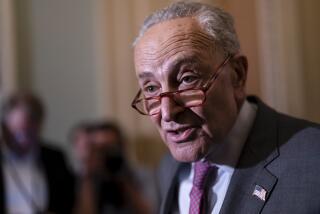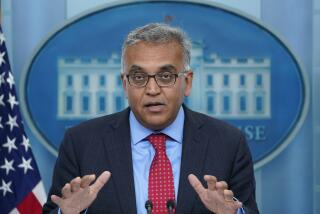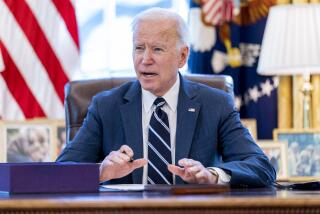Congress confronts the next coronavirus relief package as pandemic grows

WASHINGTON — It stands as the biggest economic rescue in U.S. history, the $2.2-trillion coronavirus relief bill swiftly approved by Congress in the spring. And it’s painfully clear now, as the pandemic worsens, it was only the start.
With COVID-19 cases hitting alarming new highs and the death roll rising, the pandemic’s devastating cycle is happening all over again, leaving Congress little choice but to engineer another costly rescue. Businesses are shutting down, schools cannot fully reopen and jobs are disappearing, all while federal emergency aid expires. Without a successful federal plan to control the outbreak, Congress heads back to work with no endgame to the crisis in sight.
“It’s not going to magically disappear,” a somber Senate Majority Leader Mitch McConnell (R-Ky.) said during a visit to a hospital in his home state to thank front-line workers.
Lawmakers return Monday to Washington to try to pull the country back from the looming COVID-19 cliff. Although the White House prefers to outsource much of the decision-making on coronavirus testing and prevention to the states, the absence of a federal intervention has forced the House and Senate to try to draft another assistance package.
It’s a massive undertaking, hardly politically popular, but the alternative is worse. Experts predict an even more dire public health outlook for winter. Dr. Anthony Fauci, the nation’s top infectious disease official, says the U.S. needs to “regroup.”
As McConnell prepares to roll out his $1-trillion-plus proposal, he acknowledges it will not have full support. Already the White House is suggesting changes, Republicans are divided and broader disagreements with Democrats could derail the whole effort.
House Speaker Nancy Pelosi (D-San Francisco) already pushed through a more sweeping $3-trillion relief bill to bolster virus testing, keep aid flowing and set new health and workplace standards for reopening schools, shops and workplaces.
She recently said she finds herself yearning for an earlier era of Republicans in the White House, saying that despite differences, even with President Nixon, who resigned facing impeachment, “At least we had a shared commitment to the governance of our country.”
The political stakes are high for all sides before the November election, but even more so for the nation, which now has more coronavirus infections and a higher death count than any other country. On Friday, two former Federal Reserve Board leaders urged Congress to do more.
“Time is running out,” Pelosi said.
There were just a few hundred coronavirus cases when Congress first started focusing on emergency spending in early March. By the end of that month, as Congress passed a $2.2-trillion bill, cases soared past 100,000 and deaths climbed past 2,000.
Today, the death toll stands at more than 139,000 in the U.S., with 3.7 million-plus confirmed cases.
The virus that first tore into New York, California and big U.S. cities is now plaguing places large and small, urban and rural, burning through the South, West and beyond without restraint.
Freezer cases that stored bodies outside New York hospitals are now on order in Arizona. The mobilization of military medical units to help overworked healthcare providers has shifted now to Texas.
Lawmakers hardly wore facial masks when they voted in March as the Capitol was shutting down and sending them to the ranks of work-from-home Americans. Trump and his allies still rarely wear them. But at least 25 governors from states as diverse as Alabama and Oregon now have mask requirements. The director of the Centers for Disease Control and Prevention said last week that if everyone wore a mask, it could help “drive this epidemic to the ground.”
Just as the pandemic’s ferocious cycle is starting again, the first round of aid is running out.
A federal $600-a-week boost to regular unemployment benefits expires at the end of the month. So too does the federal ban on evictions on millions of rental units.
With 17 straight weeks of unemployment claims topping 1 million — usually it’s about 200,000 — many households are facing a cash crunch and losing employer-backed health insurance coverage.
Despite flickers of an economic upswing as states eased stay-home orders in May and June, the jobless rate remains in double digits, higher than it ever was in the Great Recession.
Pelosi’s bill, approved in May, includes $75 billion for testing and tracing to try to get a handle on the virus’ spread, $100 billion for schools to safely reopen and $1 trillion for cash-strapped states that are pleading for federal dollars to pay essential workers and prevent layoffs. The measure would give cash stipends to Americans, and bolster rental and mortgage and other safety net protections.
McConnell hit “pause” after passage of the last aid package as Republicans hoped the economy would rebound and stem the need for more assistance. He now acknowledges additional intervention is needed.
His bill centers on a five-year liability shield to prevent what he calls an “epidemic of lawsuits” against businesses, schools and healthcare providers. The bill is expected to provide up to $75 billion for schools, another round of $1,200 direct payments to Americans and grants to child care providers. There are likely to be tax credits to help companies shoulder the cost of safely reopening shops, offices and other businesses.
Unlike the other coronavirus aid packages that passed almost unanimously, McConnell says this one will be more difficult to approve.
In the two months since Pelosi’s bill passed, the U.S. had 50,000 more deaths and 2 million more infections.
“If we don’t invest the money now, it will be much worse,” Pelosi said.
More to Read
Sign up for Essential California
The most important California stories and recommendations in your inbox every morning.
You may occasionally receive promotional content from the Los Angeles Times.










